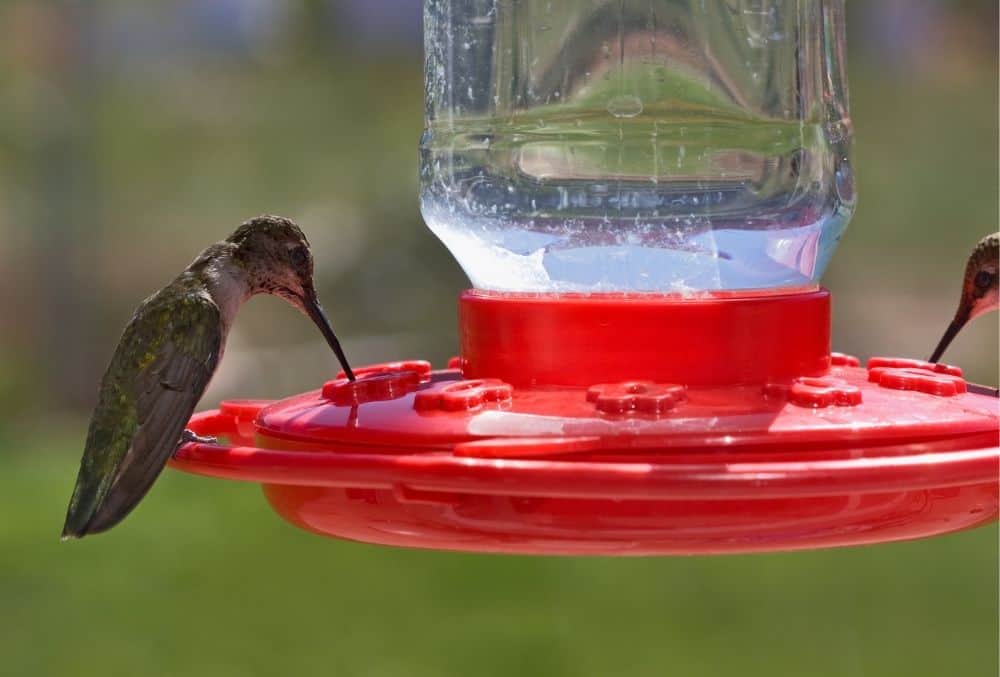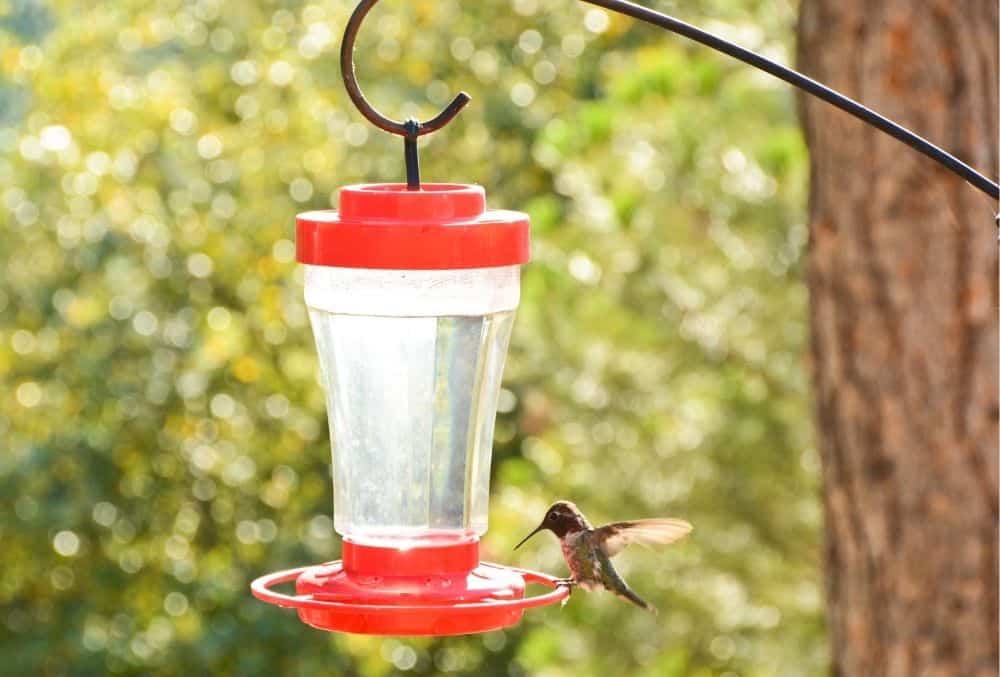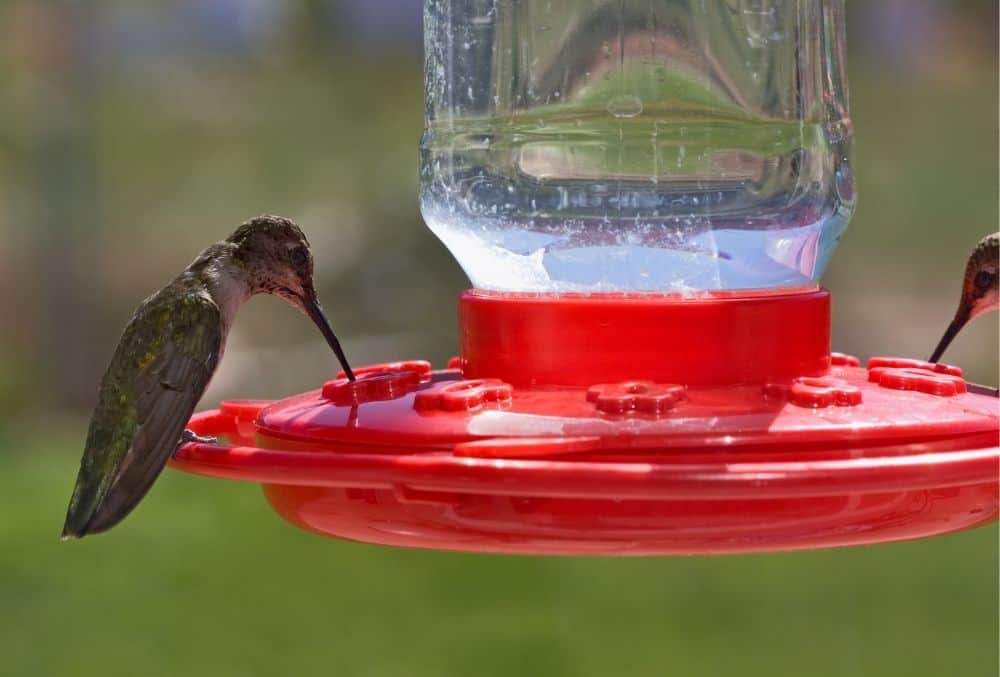Homesteading And Hummingbirds
Feeding birds from your own garden is an excellent contributor to living your best homestead life. It’s wonderful to help out all kinds of birds, but the hummingbird is a particular joy to set up a feeder for.
It’s just so fun to watch them dart about the garden eating food and collecting nectar, and it gives your homestead such a lively atmosphere!

However, it is not a simple question of finding a hummingbird feeder, setting it up in any old corner, and letting nature do its work. There are many factors to consider if you want the best results for yourself and the hummingbirds you hope to feed.
You should think about what attracts hummingbirds to the garden? What sorts of food do they eat? What factors will stop them from eating the food you so lovingly put out for them?
Luckily, we’ve put together this handy guide to help you decide where to place your hummingbird feeder. We also have some helpful tips to optimize your results, so you can enjoy a homestead full of happy hummingbirds!
What Is A Hummingbird Feeder
To put it simply, a hummingbird feeder is what hummingbirds eat from! You fill it with four cups of hot (but not boiling!) water and one cup of sugar, mixed.
You can then put them out in your garden or lands and watch as hungry hummingbirds come from all over to have a taste!
A hummingbird feeder can come in numerous shapes and sizes, most commonly a dish feeder or a bottle feeder. They are usually decorated with small, floral shapes that are punctured with holes.
They use these holes to access the food. The hummingbird feeders usually hang up via a hook, but can be pressed onto certain things via suction cups.
The Benefits Of Hummingbird Feeders
There are numerous benefits to having a hummingbird feeder as part of your homestead lifestyle.
Balancing Nature
For one thing, it helps keep your garden in check. Bringing hummingbirds to the garden will help clear out those pesky bugs that eat your produce.
Bugs are part of the hummingbird diet, and the more they eat, the safer your produce and plants are, and the less need there’ll be for you to use chemicals to keep them away. Therefore, your garden can grow in a healthy environment, and this brings some balance back to nature.
Survival
By having hummingbird feeders, you’re helping hummingbirds in more ways than simply providing them with a tasty meal. During colder months, their natural food source dwindles, and having your feeders to eat from helps their chance of survival.
Therefore, they can produce healthy offspring which in turn helps their population survive and thrive!
Hummingbird feeders really help to support the environment and the ecosystem!
Where To Hang Hummingbird Feeders
There are many places you can choose to hang your hummingbird feeder. An important factor to remember is picking a place where you can see them – they are a lot of fun to watch!

The Porch
You can hang a hummingbird feeder somewhere on your front porch! This gives you a clear view of not only the birds, but the nectar levels of the feeder, so you can keep the food fresh.
However, you should try to avoid hanging the feeder close to any walls, as the hummingbirds need room to fly around the feeder in all directions.
The Window
By using a few suction cups, hummingbird feeders can stick to the window! This is great, because you can watch the birds from the comfort of your home and won’t accidentally scare them away or disturb them.
They’re easily in view if they’re directly in front of the window too, so you can have endless fun watching them flutter around.
A Bird Feeder Pole
This is also known as shepherd’s pole, and is a good option for a feeder because you can move it around to find the perfect spot.
This is great for beginners! However, you do have to be cautious when doing this, as it will potentially cause the hummingbirds already familiar with the garden to become confused and disoriented – and they might not come back!
It may be a good option to place your pole next to water – a birdbath or a pond. Hummingbirds will use the water source and this will attract them to the garden.
Another option is in partial sun – but definitely not direct sunlight. Direct sunlight will spoil the nectar faster, and may encourage a faster growth of bacteria and mold that can harm the birds.
You can also place the feeder near flowers, as the colors will attract the hummingbirds.
On Trees
Using trees for your hummingbird feeders is probably the most aesthetically pleasing option. Should this be your choice, it is recommended that you choose a wide tree with lots of space between the branches, so the birds can move around freely.
It is also recommended that you hang the feeder at least 5 feet above the ground. This is so other creatures cannot reach it, and take the food away from the birds.
Top Tips For Hanging Hummingbird Feeders
So, now that you’ve picked the perfect spot for your feeder, there are some other important things to know about attracting hummingbirds to the garden, and ensuring that it is a safe environment for them to eat.

The Color Red
Hummingbirds aren’t exclusively pulled in by the color red. But, they do associate the color red with food. This is because of the red plants they gather nectar from, such as Bee Balm.
You can try finding a feeder with a red dish, red disk, or red flower shapes to attract the hummingbird to your garden. Alternatively, you can plant some lovely red flowers!
Other Creatures
The nectar will attract other creatures to the feeder, namely, bees, and ants. You can easily deter them from disturbing the birds by getting a bee guard for the bees, and a moat to deter the ants.
Please note that most feeders come with an additional moat. By ensuring no other creatures can access the food, it means the hummingbirds have an uninterrupted supply of it which will heighten their chances of survival.
Good Cleaning Practices
It is important to clean the hummingbird feeder regularly, so there isn’t a build up of unwanted bacteria and mold. Ideally, they should be cleaned thoroughly multiple times a week. If you live in a hot climate, then the nectar needs to be replaced daily, or there is a chance it will spoil.
What Type Of Hummingbird Feeder Should I Get?
The good news is, there is no right answer when it comes to hummingbird feeders. A bottle feeder will hold more nectar, so will not need to be changed as often, depending on where you live.
A dish feeder holds much less nectar, but this means it will always be fresh since you’ll need to add new nectar much more often.
You could even try your hand at making one yourself! It is a fun, simple process with easy-to-follow instructions. Please note that adult supervision is recommended for children when crafting.
Final Thoughts
Hummingbird feeders are a fantastic way to not only help the ecosystem, but are a great way to help live your best homesteading life! There are many different types you could get, just as there are many places they could hang – from windows, to shepherd’s poles, to trees and front porches.
Wherever you choose to put yours, keep in mind the importance of deterring other creatures, and keeping the feeder as clean as possible.
And don’t forget to enjoy watching them dart about your garden without a care in the world – it is a lively and wonderful experience for homesteaders and non-homesteaders alike!
